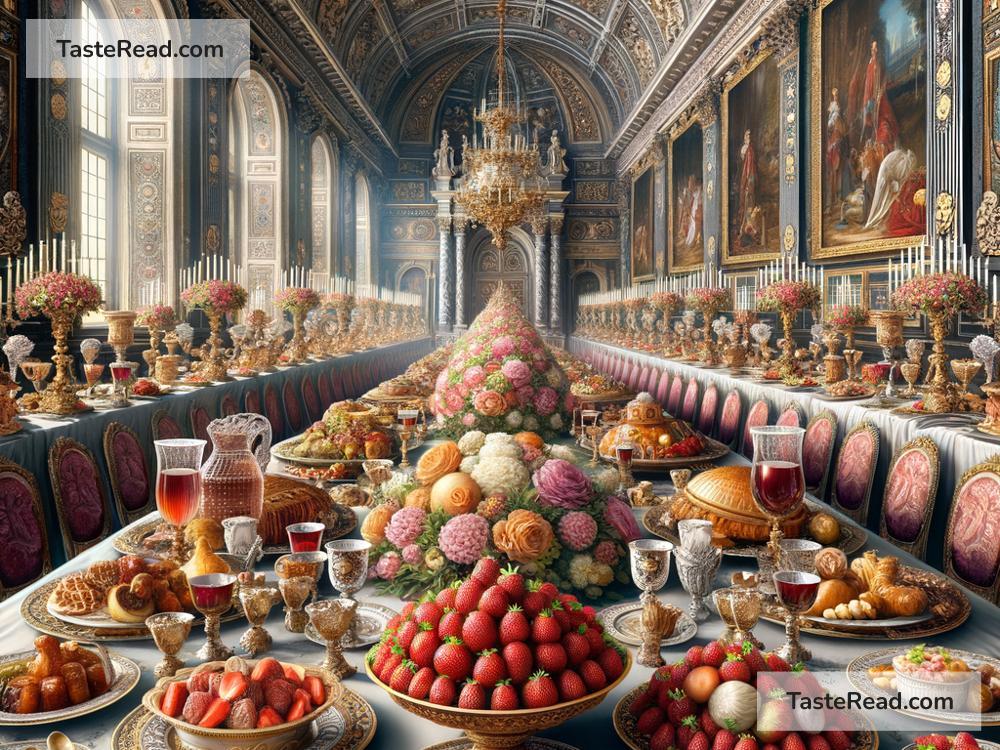The Curious History of Strawberries in European Royalty
Strawberries are one of the world’s favorite fruits. Sweet, juicy, and colorful, they make a perfect snack or dessert. But did you know that strawberries were not always so widely grown or eaten? In fact, the humble strawberry has a surprising and fascinating connection to European royalty that dates back centuries.
A Fruit of Symbolism
Strawberries didn’t originate in Europe. They first grew wild in places like North and South America and Asia. Early on, however, Europeans recognized the strawberry as a special fruit. Ancient Romans admired its bright red color and unique shape, considering it a symbol of Venus, the goddess of love, because of its heart-like appearance.
By the Middle Ages, strawberries weren’t just food – they were symbolic. They represented purity, perfection, and goodness. Paintings, carvings, and even tapestries in royal homes often featured strawberries to enhance their religious or moral meanings.
The Royals and Their Love of Strawberries
Strawberries began to gain more popularity among European royalty in the late medieval period. At first, they were wild strawberries, small and unevenly shaped but bursting with flavor. While peasants could gather them from forests, royalty could afford to plant them in fine gardens as a luxury crop.
One of the first known mentions of strawberries connected to European royalty occurred during the reign of King Charles V of France in the 14th century. His royal gardens reportedly had more than 1,200 strawberry plants! Clearly, strawberries were seen as not just a food but a mark of status and wealth.
Around this time, strawberries weren’t eaten casually like they are today. Instead, they were often used in elegant dishes or combined with other ingredients to make medicinal remedies. They were thought to have health benefits, such as curing fevers and improving digestion. Drinking strawberry-flavored water or eating a strawberry-based tonic was considered modern and refined for royals.
The Renaissance: Strawberries in Full Bloom
By the Renaissance era (around the 15th and 16th centuries), strawberries became even more fashionable and significant among European royalty. The gardens of wealthy families and kings were filled with carefully cultivated wild strawberry plants. Writers and poets described strawberries in their work, linking them to joy and beauty.
It wasn’t just kings and queens who loved strawberries. Henry VIII of England, famous for his many marriages, had a royal kitchen stocked with ingredients to prepare strawberry desserts and feasts. Strawberries even became a featured food at banquets, paired with cream or sugar to enhance their flavor. This was the early version of what we now call strawberries and cream—a favorite dish in British culture.
Similarly, Catherine de’ Medici, the Italian-born queen of France, adored strawberries. She brought new culinary ideas to France during the 16th century, including how strawberries could be used in fancy dishes.
The Arrival of the Modern Strawberry in Royalty’s Court
Though wild strawberries were celebrated for centuries, they were very different from the ones we eat today. It wasn’t until the 18th century that a big transformation happened. In the early 1700s, a French naval officer named Amédée-François Frézier brought a new type of strawberry plant back from Chile (South America). These strawberries were larger and juicier than Europe’s wild strawberries, and they quickly gained popularity.
When these South American strawberries were combined with the native wild strawberries of Europe, breeders created the modern strawberry we recognize today. It became bigger, sweeter, and more uniform in size—perfect for royal presentations and desserts.
By the late 18th century, strawberries weren’t just a rare fruit for kings and queens. They had become a symbol of indulgence and elegance in royal courts across Europe. Queen Marie Antoinette of France, famous for her luxurious lifestyle, is said to have enjoyed strawberries in her extravagant gardens at the Palace of Versailles. She preferred them served with whipped cream or sugar, demonstrating their continued role as a dessert for royalty.
From Royalty to the Rest of the World
While strawberries were initially a rare treat for Europe’s royal families, technological advances and farming innovations turned them into an affordable fruit for all people. By the 19th century, strawberries were grown on large farms across Europe and America, making them accessible not just to royalty but to ordinary citizens.
The tradition of pairing strawberries with cream—which began with royalty—became popular with regular people, particularly at events such as the famous Wimbledon tennis tournament in England. The love that European kings and queens had for strawberries helped position the fruit as timeless and special, influencing modern cultures and cuisines.
A Sweet Legacy
Today, strawberries remind us of summer, sweetness, and plenty. Though they are often associated with simple joy, their history is far from humble. From King Charles V’s gardens to Catherine de’ Medici’s plates and Marie Antoinette’s banquets, strawberries were once part of the royal world and seen as a symbol of luxury, health, and refinement.
The curious history of strawberries in European royalty shows how food influences culture. What began as a wild fruit in forests became a global favorite, shaped by kings, queens, and gardeners over centuries. It’s astonishing to think that every time we bite into a strawberry, we’re enjoying a fruit that, long ago, was worthy of kings and queens.


